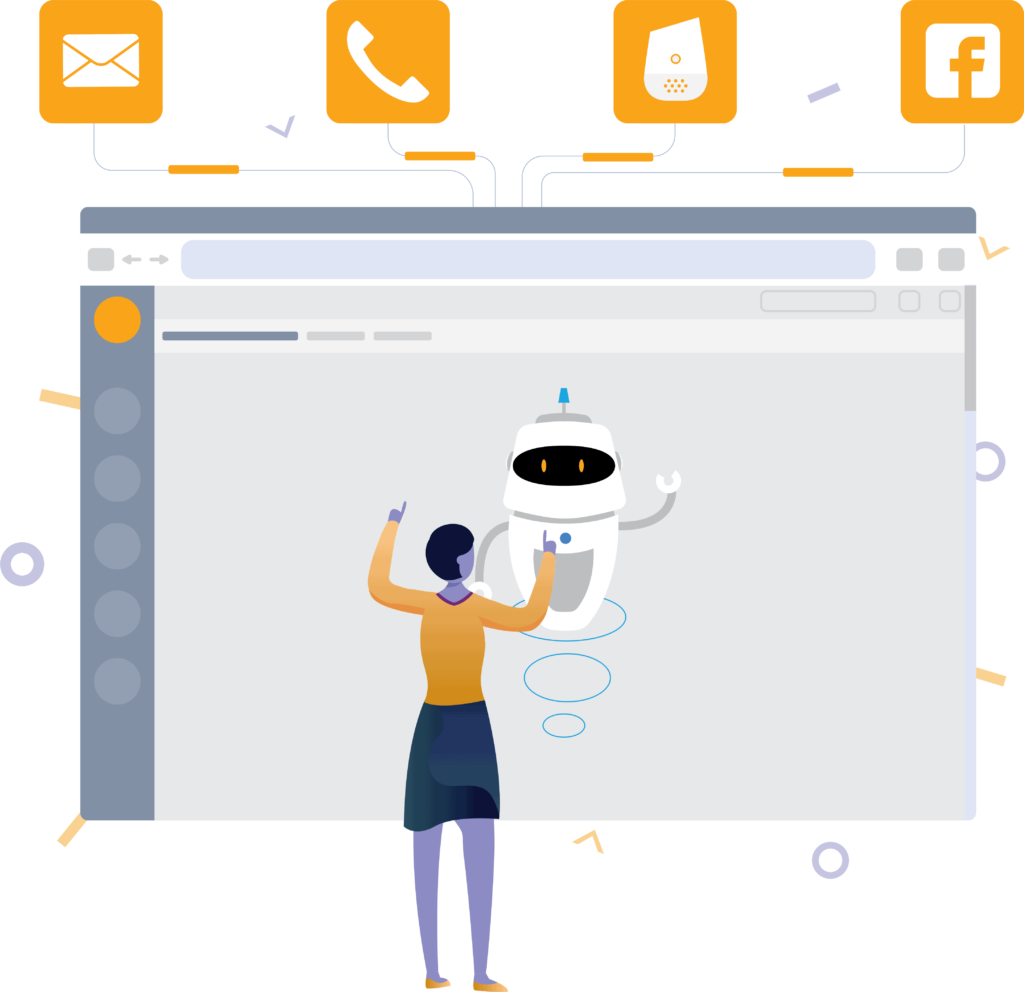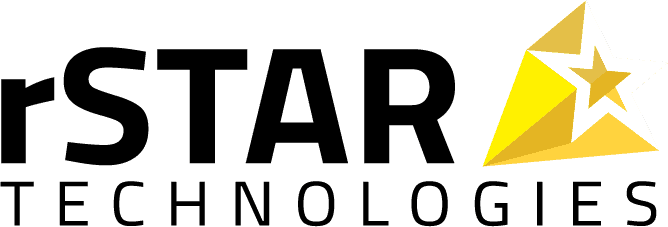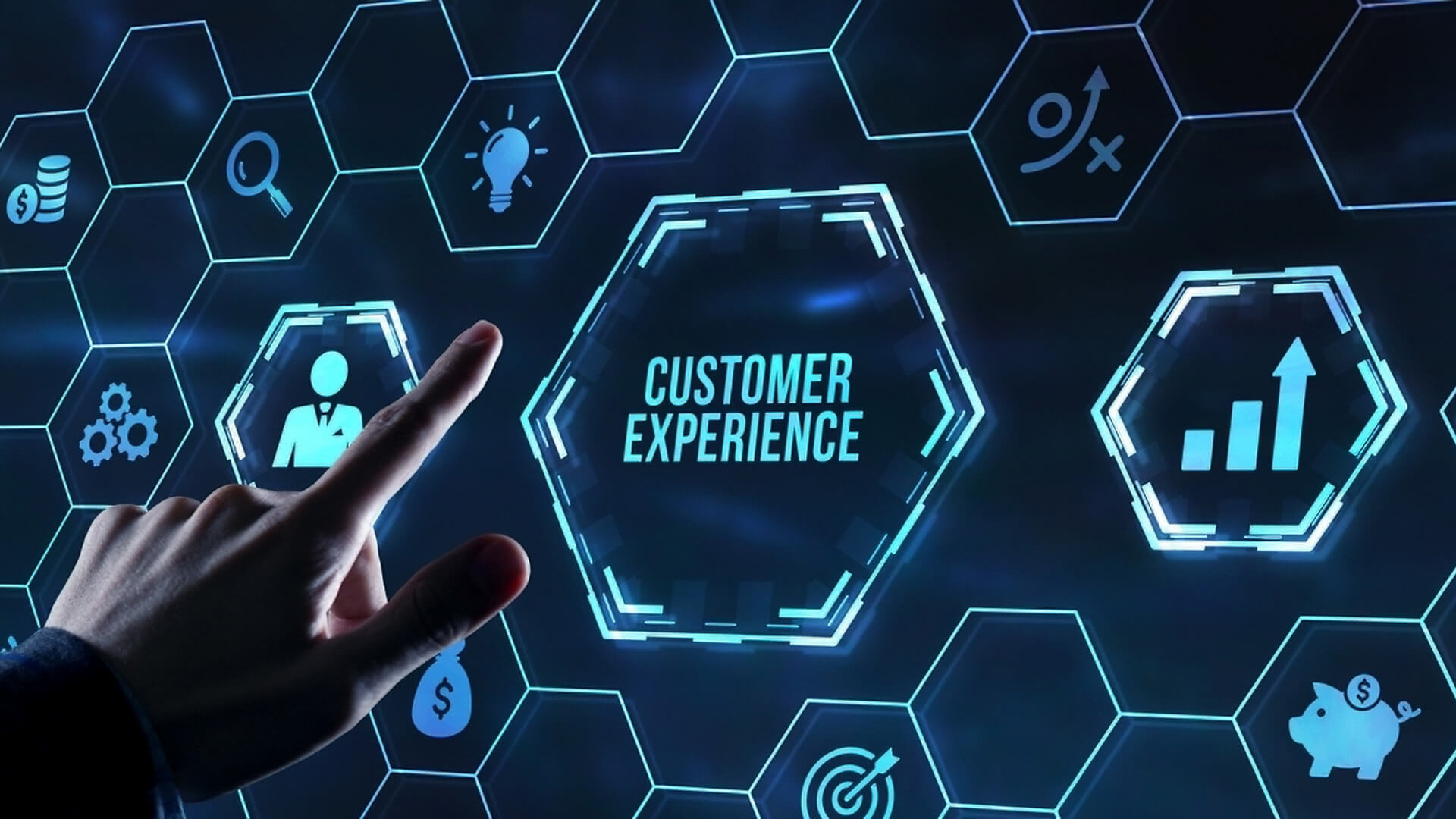Customer experience (CX) is one of the most important aspects of any business. When answering questions, connecting with information, and managing accounts is accessible, straightforward, and responsive, it builds positive buzz in the marketplace, generating customer loyalty and competitive value.
Table of Contents
On the other hand, when CX feels inconsistent, disconnected, or circular, customers get frustrated and marketplace reputations get damaged.
In this blog, we’ll…
- Define the omnichannel approach to customer service
- Explain the power & advantages of omnichannel support
- Describe the connection between chatbots & omnichannel strategy
- Connect you with ways to learn more about improving CX
What does “omnichannel” mean?
“Channels” are essentially different platforms or virtual “places” where the customer and business interact. A few decades ago, a 1-800 number was the most common support channel. In the late ‘90s, robust enterprise websites emerged as a key way companies can share knowledge with their consumer base.
Over the last ten years, channels for customer engagement have exploded. Social media sites and apps like Facebook, Twitter, Instagram, and even LinkedIn have led to a migration of the customer experience away from privately held channels (the 800 number or website) and into neutral territory. At the same time, many businesses have developed native apps to create a customized support channel, and an increasing number of consumers are welcoming digital assistants (like Alexa or Google) into their homes.
As we’ve said, however, without consistent functionality across channels, the experience feels piecemeal, incomplete, or potentially frustrating. That’s where omnichannel strategy comes in.

An omnichannel customer experience is the same across all platforms and channels. Basically, in an omnichannel strategy, any customer access point is just as strong and powerful as your call center or dedicated site. That means a fully functional customer experience is available for any individual, at any time, in any place, on any platform.
What are the advantages of an omnichannel approach?
Generally speaking, omnichannel customer service is a best practice because it gives your business the best chance to meet every customer in their time and place of need and delight them with a great experience. Let’s view that statement through the lens of five different key advantages:
- Consistency of customer experience: Customers get the same experience all the time, streamlining navigation, minimizing frustration, and maximizing clarity
- Call deflection: Omnichannel support enables customer self-service, which reduces incoming call center calls
- Reduced support costs: Maintaining an omnichannel self-service strategy allows businesses to reduce call center workhours, lowering overall support expenses
- Enable modern, exciting customer interactions: It’s 2020 and people don’t like waiting on hold or scrolling through long text-based knowledge bases; omnichannel enables a responsive CX strategy that feels light, easy, and satisfying
- Great data: When customers are engaging with you across a variety of channels, you’re also gathering a sea of data about what channels customers enjoy, what kind of assistance they’re looking for, and what they found useful
How chatbots enable omnichannel CX
Omnichannel CX sounds tricky to pull off at first because the assumption is that coding for each channel will be a unique challenge. Thanks to AI chatbot technology, that’s actually not true!
Chatbots powered by artificial intelligence are rapidly deployable across text- and voice-based channels. These conversational interfaces take the place of human agent to process customer needs and provide assistance.

When a customer reaches out to a chatbot on any platform (Facebook, your website, a voice assistant, your vehicle, SMS, etc.), the bot processes the incoming query and uses natural language processing to recognize intent, compare the query to established FAQs or issues it’s resolved successfully in the past, and deliver an answer or clarification for the customer.
Every channel is fully connected to your existing service framework, which means that even though your bots are active on a variety of platforms, you’re still providing the exact same high-quality support you’d offer to a website visitor or 800-number caller. If the request is too complex or the customer is dissatisfied, the chatbot can seamlessly hand the customer off to a human agent to provide the service they need.
In this way, the same exact same chatbot experience can be deployed across any number of channels to enable omnichannel strategy and delight customers.
Learn more about omnichannel customer service
If you’re looking to adopt an omnichannel customer service strategy to improve CX, strengthen your brand, and streamline support, rSTAR can help! We are an award-winning system integrator who is currently innovating at the cutting edge of chatbot customer service, configuring and deploying AI agents who answer customer FAQs, ease the navigational experience, and build lasting customer satisfaction and loyalty.
To learn more about chatbots as an omnichannel CX strategy, be sure to contact rSTAR today!






